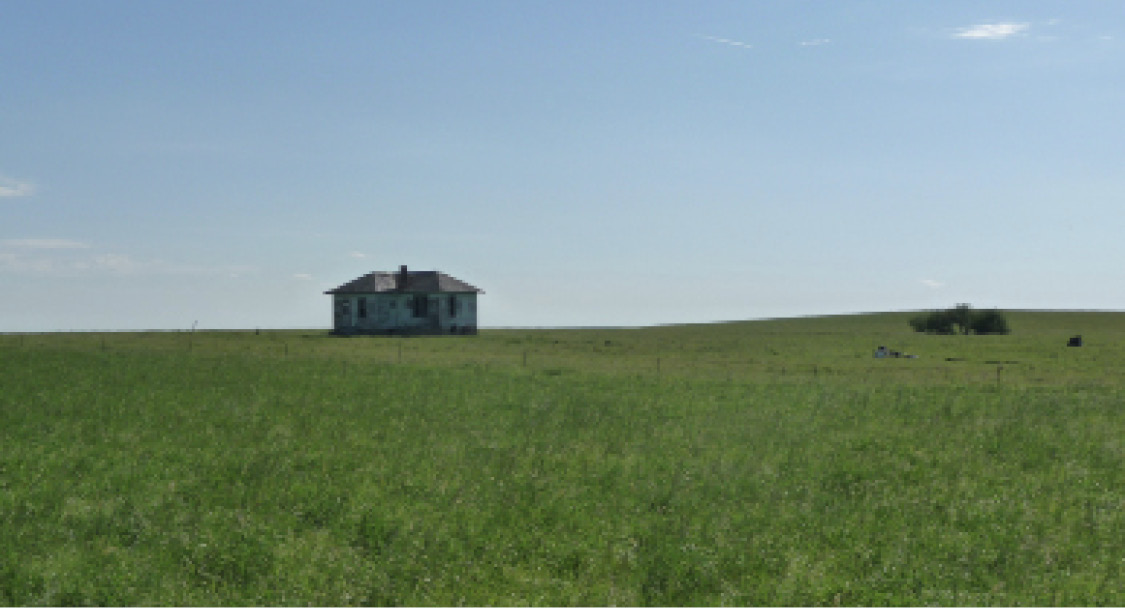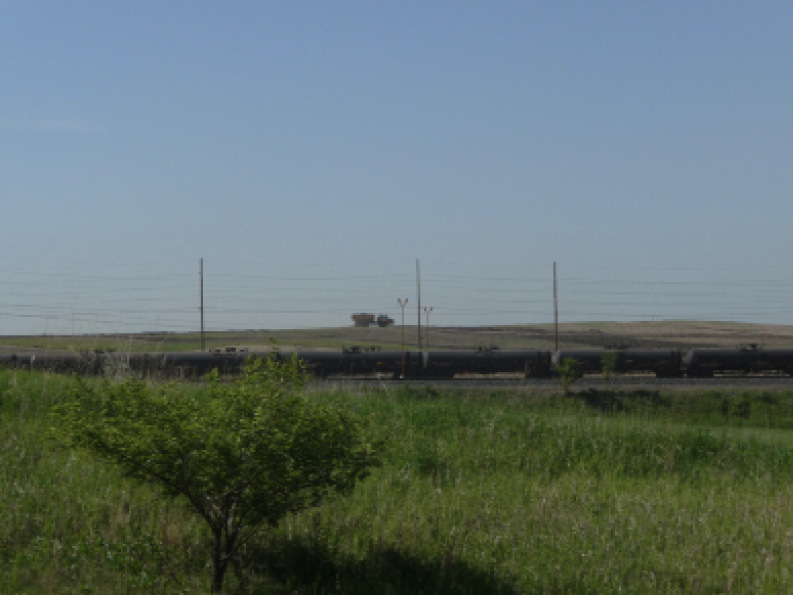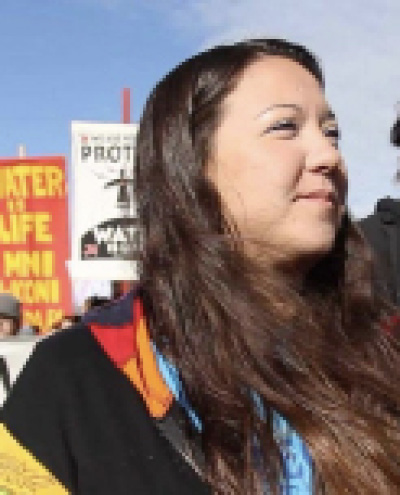Since the inception of our network, we’ve observed time and again that grassroots movement leaders who have emerged and continue to emerge are predominantly women. Perhaps that’s because colonization took the “warrior status” away from our men, or perhaps it goes deeper—having to do with the status of women as keepers of the water and carriers of the next generations. I believe it’s a combination of both and more.
Over the years, people have wanted to label me as an environmentalist, an activist, a tree-hugger, etc. However, I feel it’s important for people to know that I don’t consider myself to be any of those things. I’m simply a mom who grew up on a reservation in North Dakota, the circumstances of my life leading me to where I am today.
In order to truly understand my story, I have to back up a little bit to a time when life, for me, seemed more carefree and less worrisome. As a small child I was blessed with the freedom that comes from growing up in a rural community. I could play outside whenever I wanted, which was all of the time. I swam in Lake Sakakawea (a reservoir of the Missouri River) from sunup to sundown in the summers at my grandparents’ house. I climbed hills and explored the badlands. We had no video games or cell phones, so adults always told us to go outside and play. We often went with our grandma to pick chokecherries and made the most delicious chokecherry jams and syrups I’ve ever had. We canned them for the winter months and made other things, too, like the homemade apple turnovers that I loved so much!
My grandpa often took us out on the four-wheeler to load up on veggies from the garden and to check on one thing or another on the land. We went fishing on the lake from his pontoon boat, traveling from Mossett Bay (aka Charging Eagle Bay) over to McKenzie Bay for ice cream in the summer. We went ice fishing on the lake in the winter. It was all so perfect and idyllic for me.
I thought North Dakota was the best place in the world, because it was my beloved home and all I ever knew. It was not overdeveloped and people really did seem to care for each other. My eyes did not see the coal-fired power plants that dominate our state or the uranium mining or underground missile silos. I didn’t know North Dakota was and still is home to the nation’s only commercial-scale coal gasification plant, which can strip paint off cars parked in the wrong area under certain conditions. I didn’t realize all of this activity was polluting the lake that I loved so much and swam in every day. However, I did know that cancer and asthma, diabetes and heart disease were all normal in my world.

Photograph by Sebastian Braun
So, I was not completely surprised when, as a 20-year-old student at the University of North Dakota, I was diagnosed with a form of cancer known as a stage-4 sarcoma tumor. This is an extremely rapidly spreading cancer that’s usually attached to muscle or bone. What made it rare in my case was that it wasn’t attached to my muscle or bone; it was right there in the subcutaneous tissue of the left side of my stomach, where I could see it and feel it and watch it spreading. I remember the morning I woke up and noticed that the pea-sized lump I discovered on my tummy just a few days before had grown and was now changing color. Because of the fact that so many people on the reservation had already dealt with cancer in the past, I knew that this was not good and that I had to get to the doctor.
By the time I could get into the Indian Health Service (IHS) clinic for an emergency appointment the following week, my lump had gone from pea-sized to nickel-sized and was changing from red to dark purple to blue. I remember feeling scared because I was pretty certain that it was cancer, and I remember feeling completely taken aback when the doctor asked if I had somehow just bumped into a high-backed chair and bruised myself. He told me it looked like a bruise, and he thought I just had calcium build up from an old scar that was there. As a result, he would not give me a referral to see a specialist. Without the referral, there was nothing I could do because I had no other form of healthcare and no money. My doctor told me to come back in 30 days and sent me home.
Within less than one week I was back at the IHS clinic talking to the same doctor. The lump on my stomach had grown from nickel-sized to over the size of an unshelled walnut, and the color had spread as well. The doctor took one look, signed my referral papers, and I was on my way to Altru clinic in Grand Forks, ND to have tumor removal surgery. The tumor had to be sent to Mayo Clinic in Minnesota, and my family and I waited over two weeks before we found out for sure that it was malignant. In total I had 5 surgeries to deal with my cancer, and in the end, I refused localized chemotherapy or radiation because I had heard the horror stories of women whose good cells were so damaged by the chemo that they could not safely have children.
After I survived that experience, my life changed. I became aware of just how high the cancer rates were in North Dakota, and I wanted to learn more. As I began my research on cancer, I began noticing clear patterns of health issues in low-income, minority and low-population communities. There was no question that these communities had disproportionate rates of cancers, asthmas, diabetes, heart attacks and miscarriages. There was also no question that most of these communities were near major pollution sources, including coal-fired power plants, coal, oil, gas and uranium extraction sites, and nuclear power plant sites.
In the year 2000, my mother-in-law started a local grassroots group with other women at home called the Environmental Awareness Committee of Fort Berthold. The committee has gone through many name changes over the years, but the work has remained the same: protecting our people and communities from harms caused by fossil fuel. We started out fighting against the installation of a tar sands oil refinery on our reservation. We’ve continued fighting against the proposed refinery ever since and have thus-far succeeded at stopping it.
After my brush with cancer, I felt fortunate that I could finish my undergraduate degree in Natural Resource and Park Management in 2001. I went on to work in state and national parks, including Big Bend National Park in Texas and Fort Abraham Lincoln State Park in North Dakota. During this time, I came to understand that our country sets aside pieces of land for resource management and destroys the rest for development or extraction. I didn’t know exactly what to do with this realization, so I returned to the University of North Dakota to work on my Masters Degree in Environmental Management and successfully completed the Earth Systems Science and Policy Program in December of 2006. It was then that I learned about the Indigenous Environmental Network and decided I wanted to join them. I applied and was fortunate enough to be chosen out of 14 candidates to become the newest member of the IEN team in February of 2007.
Around this time, fracking swept down upon us at Fort Berthold, and it was like a bomb went off. While our Tribal Council, made up of all men, made decisions for us that were not in the best interest of the environment, future generations, or any of us alive today breathing the air and drinking the water, we women stepped up again and began taking matters into our own hands. We decided to dig a little deeper and found out that toxins, many of them carcinogenic, were put into our water and into our air as a result of the fracking, so we looked for the regulations and found a lack thereof. We decided that being poisoned—with or without our knowledge or free, prior and informed consent—was not acceptable here or anywhere, and we pushed back against the fracking industry. We remain embroiled in that battle even today, with some of us fighting for regulations and others of us fighting to ban fracking altogether.
We’re not just pushing to stop fossil fuel projects or uranium mining projects; we’re also working toward that next step beyond—something called a “Just Transition.” In recent years, that term has become a buzzword, and we like that it has. It means communities are actively seeking to improve and change the current system of fossil fuel destruction and abuse. You see, women have a deep and abiding tie to the land, called blood memory. It’s this blood memory that ties all women to our Mother Earth and gives us the instinct to care for our families and communities just as our Mother Earth cares for and provides for all living beings through clean water to drink, clean air to breath and clean soil in which to grow our food, none of which we can survive or thrive without.

Photograph by Sebastian Braun
It’s because of this blood memory that we can’t stand our earth being ripped apart, blown up, dug up and desecrated by the extraction of fossil fuels. It has often been said that the rape of Mother Earth is the rape of women, and this is where I return to my story’s frame: violence perpetrated against the earth through fossil fuel extraction leads to violence perpetrated against women. When fracking came to our little communities in rural North Dakota, we fully understood what that meant, as the violence against women in our communities increased exponentially. Although data is lacking on the reservation itself, counties in North Dakota near oil extraction sites saw an 18.5 percent increase in violent crime between 2006 and 2012. As man-camps ruled the prairies, women and children became the victims of men working grueling hours in the oil fields with little to do in their down time besides haunt the small town bars and engage in predatory behavior—against women particularly, but also against children and men. Fort Berthold became ground zero for sex trafficking, and the numbers continue to go egregiously underreported throughout the state.
This has often been referred to as the dark side of the oil boom, which I never understood, as I have never seen a bright side to the oil boom. Money is certainly not a bright side, as it has caused jealousy, greed and heartache for both those that have it and those that don’t.
Through the U.S. Energy Information Administration, I found out that North Dakota’s total energy production is six times greater than its energy consumption—meaning that others get the energy while we get the sickness and pollution. In 2016, North Dakota was the second largest crude oil producing state due to fracking. In 2017, two-thirds of North Dakota’s net electricity generation still came from coal, which is ironic considering that North Dakota has abundant wind resources, ranking ninth in the nation for utility-scale generation.
I also found out through the North Dakota Department of Health that all of North Dakota’s rivers, lakes and streams—over 11,000 miles of them—are contaminated with mercury due to years of coal extraction. Women in particular are told not to consume too much fish during pregnancy, because of the dangers posed by mercury exposure to the unborn child. These dangers do not even take into account the exposures we face as a result of the oil drilling and the subsequent flaring of natural gas in the Bakken. More and more fish are pulled out of Lake Sakakawea with deformities. Blue green algae blooms, which used to cause fish die-offs only rarely, are now becoming the norm. However, they continue to go underreported and get covered up. Growing up, I loved eating walleye taken fresh from the lake, battered and fried up right there near the shores. I wonder now if that and other facets of my day-to-day life in North Dakota led to my recent heartbreaking miscarriage, or to my sisters’ miscarriages, or to all of my cousins’ miscarriages. We just live with the fact that we may never truly know or be able to prove a connection.
This is why the movement at Standing Rock—protesting the extension of the Dakota Access Pipeline across tribal lands—was so beautiful and so necessary. We have seen that it’s difficult and sometimes dangerous work to fight back against the greed of the multi-billion-dollar fossil fuel industry to protect our families and our water. We see that we need to educate people on a different and better way to live upon the earth. Even though there’s backlash due to corporate and industrial propaganda, the work we do is necessary, and it must not end until justice has been realized for everyone, including those of us that have dealt with environmental injustice our whole lives.
As women leaders, we’re determined to protect our families and communities, and we are ramping up our efforts to expose the false solutions to the climate crisis currently being pushed upon our societies at an international level. These false solutions are based upon global carbon market trading schemes, which allow polluters to continue to pollute at the local level, instead of solving the root cause of the problem and leaving fossil fuels in the ground. Just this past September, leaders from around the world met in spaces such as the Global Climate Action Summit to determine the best way to continue to make money, while simultaneously pacifying a growing population of people educated on the climate crisis.
Yet here we are today: working as Native women in our communities trying to find a way forward and striving for that bright side that we can see there just off in the distance as our way out. We see that we have our culture with us, and we have our traditional teachings to guide us and to wipe our tears as we fight back once again. Our vision for a Just Transition includes such things as large-scale community gardens (for we know that we cannot be truly sovereign unless we can feed ourselves); small-scale distributed power, in the form of the gifts we receive from the sun and the wind; and the creation of jobs for our men that will make them whole again as providers for their families, but that will not negatively impact their health and ours.
As women, as educators, as nurturers and as keepers of the water, we will not quit, we cannot quit, until we succeed in changing the current course of our future on this planet. Our blood memory continues to drive us to protect our future generations by fighting for the protection of the very source that gives the breath of life to all living beings: our one and only Mother Earth.


